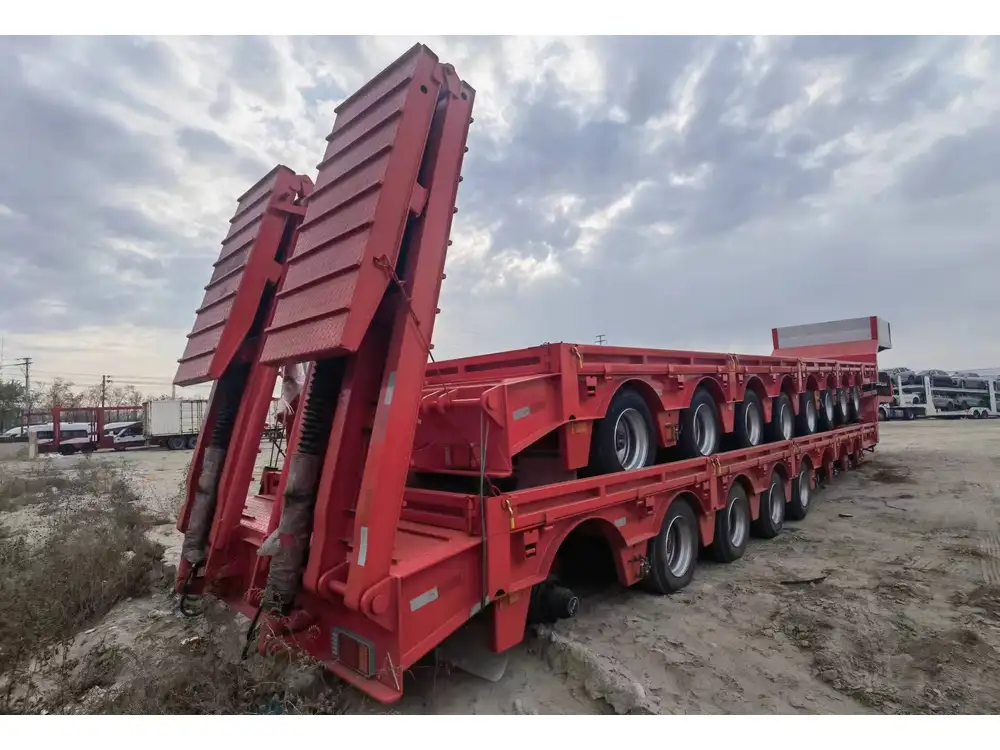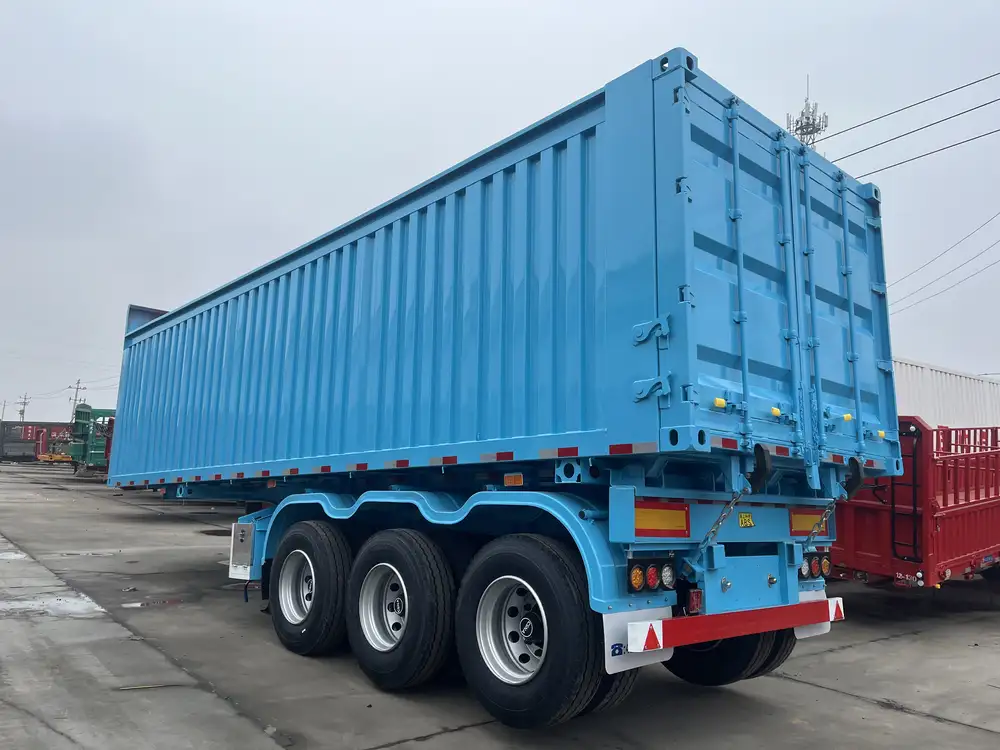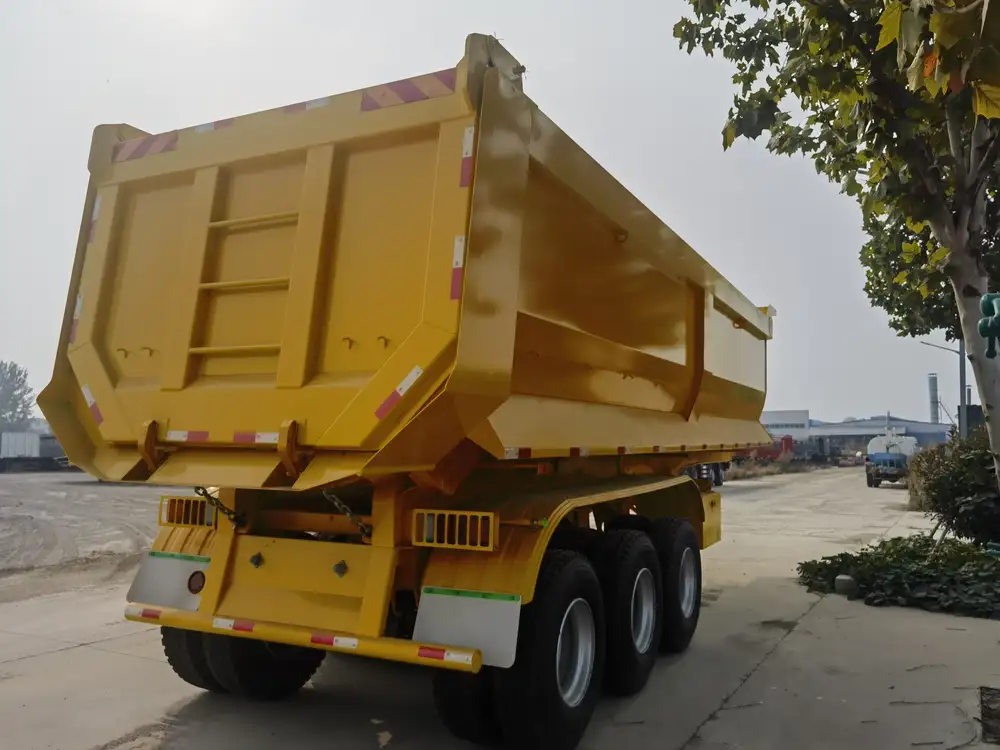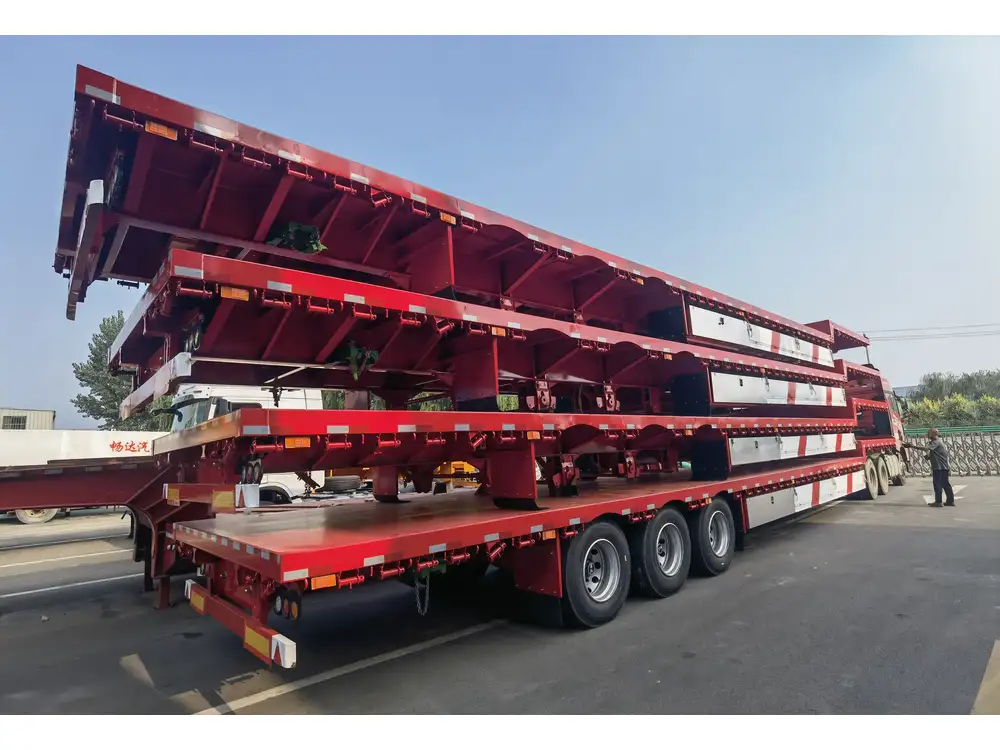When it comes to the transportation industry, flatbed trailers are indispensable tools that enable the movement of heavy cargo with efficiency and safety. One of the critical aspects of flatbed trailers that everyone involved in the logistics and manufacturing sectors must understand is axle weight. This article aims to delve into the complexities of flatbed trailer axle weights, shedding light on their importance, influencing factors, and implications for compliance and safety.
What is a Flatbed Trailer?
Flatbed trailers, as the name implies, are trailers with a flat, open deck, available in various sizes to accommodate different freight types. Unlike enclosed trailers, flatbeds offer easy loading and unloading options, which are particularly beneficial for oversized and heavy goods that don’t fit within standard constraints.
Key Features of Flatbed Trailers
- Open Design: Ideal for large, cumbersome items.
- Versatility: Can transport machinery, lumber, vehicles, and bulk goods.
- Variety of Sizes: Ranges from 20 to 53 feet to suit diverse loads.

Understanding Axle Configuration
Flatbed trailers can feature various axle configurations, which influence the overall weight distribution. Typically, the axles are designed to manage heavy loads while maintaining balance, which is crucial for safe transportation.
Common Axle Configurations:
- Single Axle: Used for lighter applications.
- Tandem Axle: Two axles positioned closely together, common for standard loads.
- Tri-Axle: Three axles for heavier or specialized loads.
- Quad-Axle: Four axles for extreme loads requiring significant weight capacity.
Significance of Proper Axle Weight Distribution
Proper axle weight distribution is necessary to ensure safety on roads. Poorly distributed weight can lead to:
- Increased tire wear.
- Poor handling and steering.
- Risk of accidents.

How Much Does a Flatbed Trailer Axle Weigh?
The weight of a flatbed trailer axle can vary significantly based on several factors, including the size and type of the axle and the materials from which it is constructed. Here, we present a comprehensive breakdown of typical axle weights and factors influencing these weights.
Standard Axle Weights
| Axle Type | Average Weight (lbs) | Common Uses |
|---|---|---|
| Single Axle | 1,200 – 2,000 | Light-duty trailers, smaller loads |
| Tandem Axle | 2,000 – 4,500 | Standard flatbeds, medium loads |
| Tri-Axle | 4,500 – 7,000 | Heavier cargo, construction materials |
| Quad-Axle | 7,000 – 10,000 | Specialized trailers, massive loads |
Factors Affecting Axle Weight
Material Composition: The choice of material (steel vs. aluminum) significantly influences axle weight. Steel axles are generally heavier but provide more durability, while aluminum offers reduced weight and improved fuel economy.
Axle Design: The design and engineering of the axle determine its weight. Heavy-duty axles designed for higher load capacities will weigh more than standard versions.
Suspension System: The type of suspension (leaf spring, air ride) integrated into the axle can also impact its overall weight. Advanced suspension systems might add extra weight but enhance stability.
Manufacturing Standards: Compliance with regulatory standards such as those set forth by the Department of Transportation can dictate certain specifications around weight and design.

Regulatory Considerations
When transporting goods, understanding the regulations governing axle weight is critical. Compliance ensures safety, efficiency, and legality in transportation practices.
Weight Limitations
- Federal Limitations: The Federal Highway Administration (FHWA) sets maximum weight limits for vehicles on U.S. highways.
- State Regulations: Each state may have specific regulations concerning weight limits that can vary considerably.
Importance of Compliance
- Avoiding Fines: Overweight violations can lead to hefty fines and litigation.
- Safety Concerns: Ensuring compliance promotes safer travel, decreasing the likelihood of accidents caused by overloading.

Calculating Axle Weight
To effectively calculate the weight on each axle, it helps to utilize specific formulas that take into account the distribution of cargo and trailer specifications.
Simple Formula to Calculate Axle Weight
- Determine the total gross weight of the trailer and load.
- Note the number of axles used.
- Divide the total weight by the number of axles to find average weight per axle.
Example: A flatbed trailer carrying a total load of 40,000 lbs with three axles: [ \text{Axle Weight} = \frac{\text{Total Weight}}{\text{Number of Axles}} = \frac{40,000 \text{ lbs}}{3} \approx 13,333 \text{ lbs} ]
Factors to Consider in Calculations
- Uneven cargo distribution can skew average axle weight calculations.
- Always measure the weight of the load before setting out to ensure compliance with regulations.

Common Questions About Flatbed Trailer Axle Weight
1. What is the Maximum Weight Capacity for Each Axle?
The maximum weight capacity for each axle generally ranges between 20,000 to 25,000 pounds, depending on the setup and design. However, adherence to bridge laws is imperative to prevent axle overloading.
2. How Can Overloading Impact Axle Health?
Excessive loading can lead to severe damage over time, including:
- Deformation of Axles: Permanent bending or damage to axles.
- Increased Maintenance Costs: Frequent repairs can result in substantial operational costs.
- Safety Hazards: Overloaded trailers often experience control and handling issues, increasing the risk of accidents.

3. How Long Do Axles Last?
The lifespan of a trailer axle largely depends on maintenance practices, load conditions, and the materials used in construction. On average:
- Standard Axles: 10 to 15 years of service life.
- Heavy-Duty Axles: 15 to 20 years, given proper care.
4. What Maintenance Practices are Recommended?
Regular maintenance involves inspecting and greasing the axle components, checking for signs of wear, and ensuring that weight limits are not being exceeded. Implementing a proactive maintenance routine ensures prolonged life and optimal performance of the trailer.
Advantages of Understanding Flatbed Trailer Axle Weight
Understanding axle weight can lead to improved efficiencies and operational excellence within the transport sector. Here are several advantages:
- Enhanced Safety: Correct weight distribution mitigates risks during transit.
- Cost Efficiency: Proper axle weight can reduce fuel consumption and prevent excessive wear on the vehicle.
- Regulatory Compliance: Being informed about axle weight helps adhere to legal restrictions.

Conclusion
As a manufacturer or user of flatbed trailers, comprehending the intricacies of axle weights is paramount for achieving operational success. By understanding factors influencing axle weight, calculating loads accurately, and adhering to regulations, stakeholders can ensure safe and efficient transportation. The information provided in this article serves as an essential resource for those in the logistics field, enhancing knowledge and promoting best practices.
Understanding flatbed trailer axle weight isn’t just a regulatory concern; it’s about ensuring effective operations, reducing costs, and most importantly, maintaining a safe transportation environment. For any manufacturer or user of flatbed trailers, this knowledge is invaluable.



